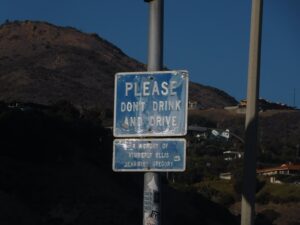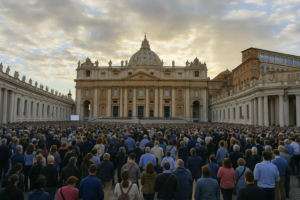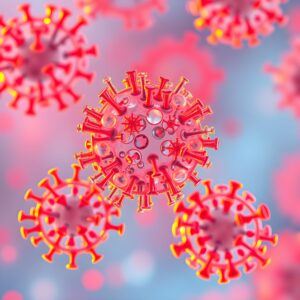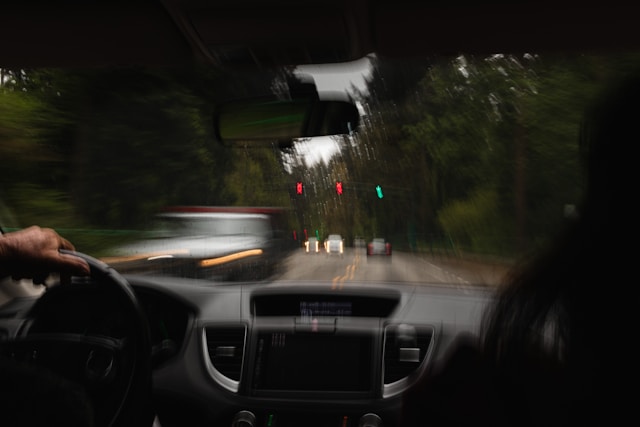Learn the shocking statistics and consequences of drunk driving during the holidays. Find out how to stay safe and prevent road fatalities with practical tips.
The Threat of Drunk Driving During the Holidays
The holiday season brings joy, celebrations, and reunions with loved ones, but it also introduces one of the most dangerous times of year for driving. Between Thanksgiving and New Year’s, there is a significant spike in drunk driving incidents, with devastating consequences for drivers, passengers, and unsuspecting motorists. While the holidays are meant for creating happy memories, for thousands of families, this period becomes a tragic reminder of lives lost due to preventable alcohol-related accidents.
Every year, law enforcement agencies, public safety campaigns, and nonprofit organizations like Mothers Against Drunk Driving (MADD) work tirelessly to raise awareness, yet impaired driving persists. The Centers for Disease Control and Prevention (CDC ) confirms that drunk driving is a leading cause of traffic fatalities in the U.S., with an average of 32 deaths each day involving alcohol-impaired drivers. The holiday season amplifies this issue, accounting for nearly 25% of annual drunk-driving-related fatalities.
The tragic nature of drunk driving doesn’t just come from fatalities; survivors of alcohol-related crashes often endure lifelong injuries, including paralysis or brain damage, along with emotional trauma. Families of victims face immense grief, making what should be a joyful holiday season unbearable. Yet these tragedies can be entirely prevented through better decision-making and responsible behavior.
Despite widespread awareness campaigns, the dangerous misconceptions about drunk driving persist. Many motorists think that being “buzzed” or having “only a couple of drinks” doesn’t impair their ability to drive, which couldn’t be further from the truth. Even with a small amount of alcohol, reaction time diminishes, focus becomes compromised, and decision-making worsens—making driving unsafe in any capacity after drinking.
This article will explore the reasons behind the rise in drunk driving during the holidays, examine its consequences through devastating statistics, and share actionable strategies to prevent these avoidable tragedies. By taking responsibility and promoting awareness, we can work to make the holiday season safer for everyone.
Why Does Drunk Driving Increase During the Holidays?
Drunk driving incidents peak during the holidays due to a combination of cultural habits and seasonal circumstances. Social gatherings such as Thanksgiving dinners, Christmas parties, and New Year’s Eve celebrations typically involve alcohol consumption. While drinking responsibly is possible, many attendees fail to arrange safe transportation home, leading to impaired individuals taking unnecessary risks behind the wheel. Alcohol has become such a routine part of holiday events that its presence often goes unnoticed—until tragedy strikes.
The volume of road travel also reaches its highest levels during this season. According to AAA , more than 112 million Americans traveled for the holidays in 2022, with most journeys taking place on crowded highways. This surge in traffic increases the chances of collisions, and when impaired drivers are added to the equation, the road becomes even deadlier. Drunk drivers are less able to navigate busy intersections, respond to sudden stops, or adjust to weather-induced road hazards, making them a danger not only to themselves but to everyone around them.
Misconceptions about the levels of impairment alcohol can cause also play a major role in drunk driving during the holidays. Many believe that only those who are visibly intoxicated are unable to drive safely; however, research shows that even a blood alcohol concentration (BAC) of 0.02% impairs a driver’s reaction time and focus. By the time a BAC reaches the legal limit of 0.08%, a driver’s ability to control their vehicle is significantly reduced. Normalizing “buzzed driving” reinforces risky behavior, particularly during celebratory periods.
Another factor that contributes is holiday fatigue. The same season that involves extended family visits, packed shopping trips, and job-related stress also sees people staying up late at parties or traveling for long hours. Fatigue, when combined with alcohol, increases impairment dramatically. Drivers who become drowsy are slower to process their surroundings and more prone to distraction—a set of conditions that can easily turn fatal on a busy roadway.
Finally, the extended holiday timeline exacerbates these issues. Celebrations begin as early as Thanksgiving and stretch well into January, meaning that there are multiple opportunities for people to drink and drive. Unlike single-day events, this multi-week period increases exposure to risky situations, ensuring drunk-driving incidents remain consistently high throughout the season.

Drunk Driving Statistics: The Lessons in Numbers
The numbers related to drunk driving during the holidays are both sobering and eye-opening, revealing the true scale of the issue. Drunk driving remains one of the deadliest risks on the road, and holiday-specific trends highlight how festive periods amplify the dangers. In 2022, over 12,456 fatalities were the result of alcohol-impaired crashes across the U.S., with more than 1,200 occurring between Thanksgiving and New Year’s Day alone. These statistics demonstrate the stark reality of how celebrations often turn into tragedies.
The following table summarizes key drunk driving statistics from the past several years, showcasing totals, alcohol-specific fatalities, and the spike seen during the holiday season. These figures are sourced from the NHTSA , CDC , and related agencies:
Drunk driving accidents cost the U.S. $44 billion each year , including costs from emergency medical services, property damage, and funerals. Beyond financial damages, the emotional toll on families is incalculable. Survivors often describe losing loved ones to impaired driving as a “forever wound” that cannot heal, making it clear that these numbers aren’t just statistics—they represent lives destroyed by preventable mistakes
Hospitalizations and long-term injuries are another area of concern. For every drunk-driving-related fatality, dozens of others survive with broken bones, burns, spinal cord injuries, or brain damage. These survivors often face costly rehabilitation, loss of income, and significant psychological trauma, particularly when recalling the events that led to their crash.
The consistency of these numbers over the years underscores a crucial fact: drunk driving is predictable and preventable. It increases during the same times due to the same factors year after year, which means actionable interventions can save thousands of lives. This data acts as both a call to action and a guide for prevention strategies.
The Consequences of Drunk Driving: Devastating Ripple Effects
The consequences of drunk driving ripple far beyond the initial crash. They impact victims, offenders, families, and communities, leaving emotional, physical, and financial scars on everyone involved. Understanding the broad consequences of impaired driving highlights the pressing need for accountability and preventative action.
For victims, the effects of an alcohol-related accident are often irreversible. If they survive a collision, victims may face life-altering injuries, such as paralysis or brain damage, that require years of therapy and rehabilitation. The emotional trauma of nearly losing one’s life, combined with ongoing pain and reduced mobility, creates a barrier to fully regaining quality of life. Tragically, some victims spend their holidays permanently hospitalized or in long-term care centers.
Drunk drivers themselves face severe legal consequences if caught. A DUI (Driving Under the Influence) conviction can result in hefty fines, license suspension, mandatory education programs, and in extreme cases, prison time. Repeat offenders often find themselves saddled with additional penalties, such as ignition interlock devices that prevent vehicles from starting if alcohol is detected. These legal and financial burdens often follow offenders for years.
Beyond legal repercussions, the social impact on drunk drivers is profound. Once convicted, individuals may lose their jobs, damage personal relationships, and face a stigma that makes reintegration into their community difficult. In cases where fatalities occur, offenders often struggle with guilt and remorse for having taken lives, a burden that can be emotionally crushing.
The societal costs of drunk driving cannot be overstated. Communities bear the financial burden of emergency medical responses, insurance claims, and legal proceedings. Additionally, high-profile drunk driving accidents often leave emotional scars on communities, particularly when children or other vulnerable members of society are involved.
Perhaps most importantly, the true cost of drunk driving lies in loss of life. Drunk driving robs families of loved ones, leaving empty chairs at their holiday tables. It turns joyous celebrations into periods of mourning, echoing across years. The preventable nature of this loss makes it particularly devastating for those left behind.
How to Prevent Drunk Driving During the Holidays
Preventing drunk driving requires a combination of individual responsibility, community effort, and public policy. By encouraging safe habits and making preventative measures more accessible, we can drastically reduce the number of alcohol-related crashes during the holidays and beyond.
The first and simplest step is to plan ahead . Before consuming alcohol, ensure you have a designated sober driver or arrange for alternative transportation via Uber , Lyft , or a reliable taxi service. If no rides are available, staying overnight rather than driving is a life-saving alternative. Prearranging these options prevents split-second, poor decisions that lead to tragedy.
Hosting an event responsibly is another critical way to prevent drunk driving. Provide non-alcoholic drink options and encourage guests to pace their drinking with food. Stop serving alcohol well before the party ends, giving your guests time to sober up. If needed, offer rides or accommodate guests who can’t make it home safely.
Supporting public awareness campaigns is essential for shifting the culture around drinking and driving. Programs like Drive Sober or Get Pulled Over and efforts by MADD educate communities about the real consequences of drunk driving. Sharing these initiatives on social media or participating in local events can inspire collective responsibility for safer roads.
Technology also provides tools for prevention. Ignition interlock devices have proven effective for DUI offenders, as they won’t allow a car to start if the driver’s BAC is above a set threshold. Expanding similar measures, such as automatic alcohol-detection systems in all vehicles, could save countless lives. Advocating for stricter laws around DUI offenses also drives home the message that impaired driving is unacceptable.
Ultimately, the power to prevent drunk driving lies with individuals and families. Holding friends accountable, offering alternatives, and intervening to stop someone from driving impaired are actions that save lives. Together, a culture of responsibility can turn the holidays into a time of joy instead of heartbreak.
A Season to Celebrate Responsibly
The holiday season is a time for celebration, gratitude, and connection. However, the joy it brings is often overshadowed by the devastation caused by drunk driving. Each year, over 1,200 lives are lost during Thanksgiving, Christmas, and New Year’s festivities due to alcohol-impaired crashes. These tragedies aren’t inevitable—they’re preventable when we choose responsibility over risk.
From planning safe transportation to hosting responsibly, preventing drunk driving requires a joint effort from individuals, families, communities, and policymakers. Supporting awareness campaigns and advocating for stricter DUI laws are steps that reinforce the real consequences of impaired driving while actively promoting alternatives. Every small action contributes to saving lives.
This holiday season, let’s prioritize the safety of our loved ones and the people sharing our roads. Responsible choices ensure that we can celebrate together for many years to come. Remember, no drink or party is worth risking lives. Make safety your top priority not just for yourself, but for everyone on the road.












